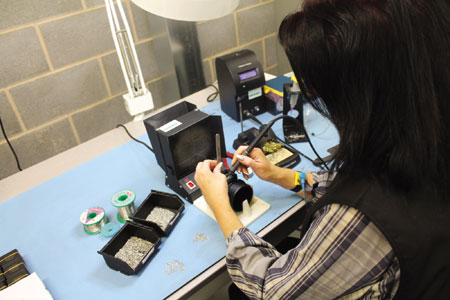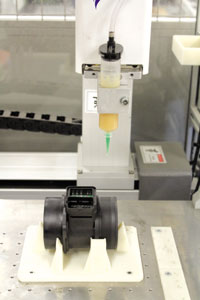
Ensure that you’re not making costly mistakes from the mis-diagnosis of mass air flow meter problems by following these handy tips.

The purpose of the mass air flow meter (MAFM) is to send a signal to the ECU relating to the mass of air entering the engine (mass equals the quantity AND quality). The requirement for accuracy, from all sensors, has therefore risen in line with our ever-tightening emission regulations.
In the 1980’s the meter of choice was a mechanical, sprung loaded flap. Although this was sufficiently accurate to indicate the volume of air entering the engine, no account was taken of the air quality/density.
As the need for accuracy increased so too did the demands placed on the design of air/mass meters – this evolution spawning hot wire, hot film and air deflection/Karmen Vortex technology. All of these either have been, or are currently utilised in modern applications.
Hot stuff By far the most common MAFM in today’s market is the hot film type. Introduced in the early 1990’s as a development of the hot wire, it utilises sensing elements located on a ceramic blade type element suspended in the air flow.
By far the most common MAFM in today’s market is the hot film type. Introduced in the early 1990’s as a development of the hot wire, it utilises sensing elements located on a ceramic blade type element suspended in the air flow.
The sensing elements, which are located on the side, are protected against dirt/deposits by the front edge of the blade; hence this type of sensor has improved long term accuracy. A very accurate instrument that has a failure tolerance as low as 0.2 V within its operating range of around 4 V, this type of unit very rarely fails altogether. It does, however, have a tendency to lose accuracy.
How to test for MAFM Failure Diagnosis of MAFM failures can be complicated due to two issues:
Diagnosis of MAFM failures can be complicated due to two issues:
1. Other components having a role in the quantity of metered/un-metered air entering the engine
The first test of a potential MAFM failure should always be to check the integrity of the inlet system. The intake system is designed as a sealed unit from air filter to engine inlet, so any component “intruding” into this sealed unit has the potential to fail and adversely affect the role of the meter. This includes the operation of the EGR valve, any vacuum operated components, the integrity of the intake trunking and intake seals/gaskets.
The ECU is not intelligent enough to differentiate between a fault caused by un-metered air entering the engine (i.e. air leak) and a low voltage reading from the MAFM; all it knows is that there is a discrepancy between the information it’s expecting and the information it’s receiving
2. The complexity/intelligence of the system
Even a failed MAFM will respond to air flow changes, but the response will be inaccurate. The ECU will receive information on varying air flow ergo and it perceives that the MAFM is working. The ECU is aware of a problem “somewhere” but limited intelligence of the system results in inaccurate fault code information. The indicated faults may be air flow related (EGR) or, often, totally spurious (Lambda).
Remember, always take a logical approach
To avoid expensive errors the answer, as always, lies in a structured, logical approach to diagnosis.
Check the codes and use the information to assist the repair and not dictate the results. Find the fault, confirm the fault, fix the fault and then finally confirm the fix.









